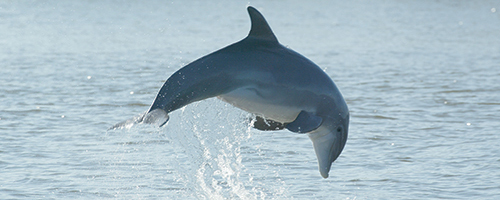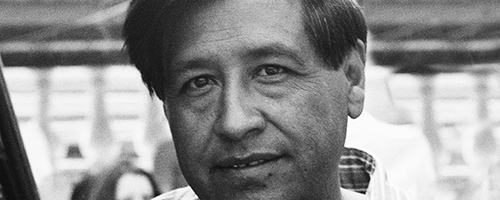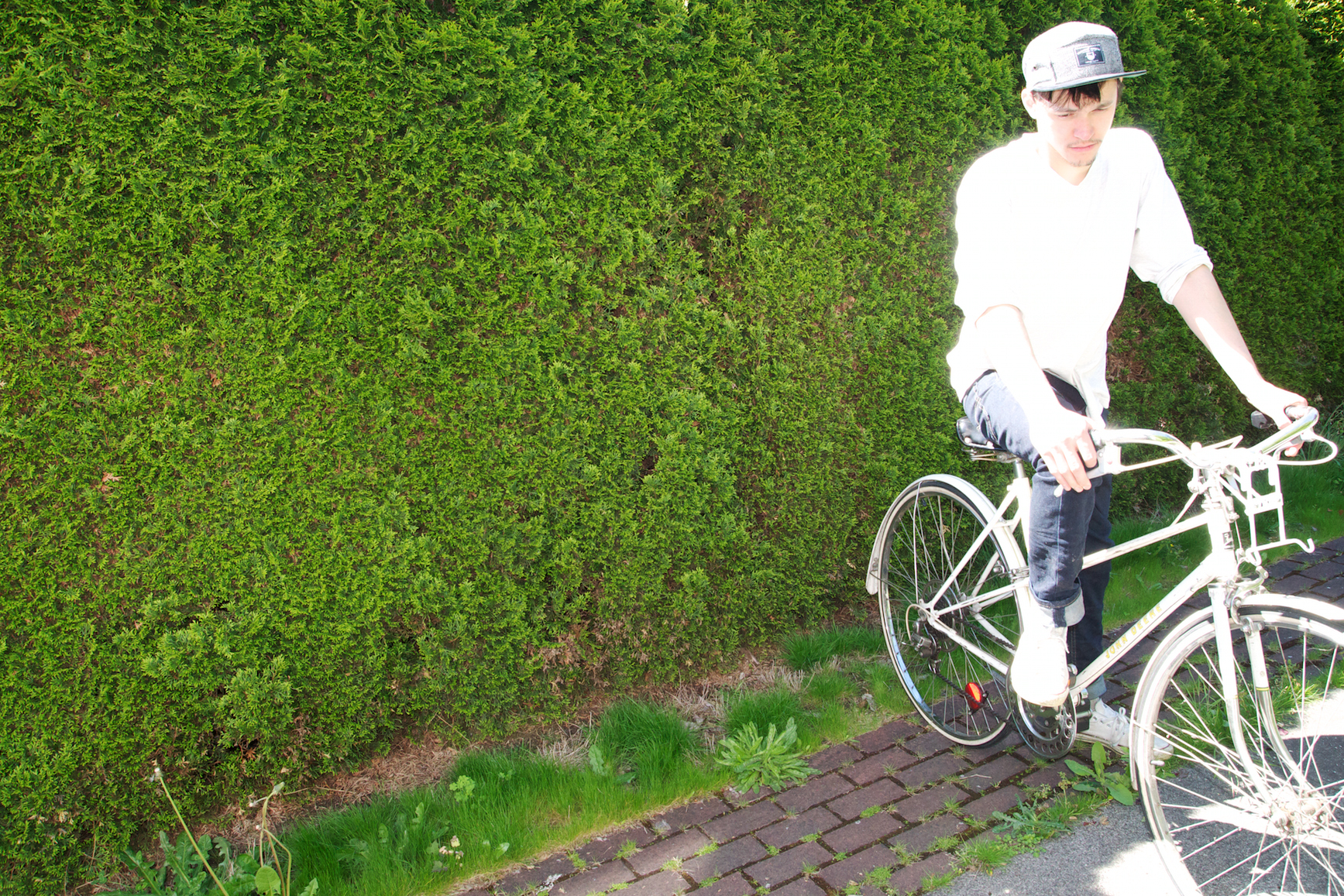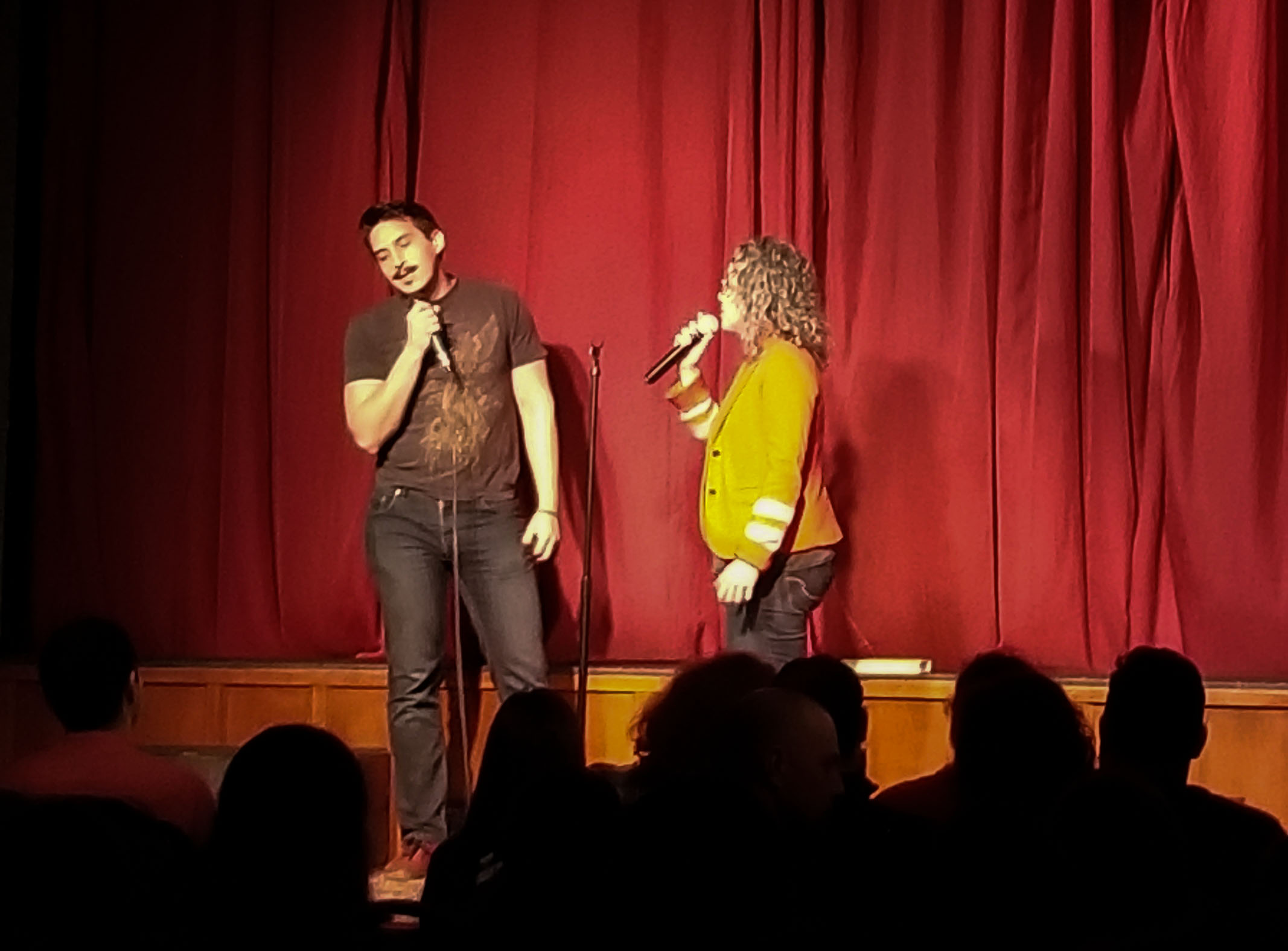As a kid, Portland State biology doctoral student James Powell wanted to work with dolphins. He didn’t know how or what he would be doing with them, just that he needed to build his professional career around them. At one point, he considered becoming a dolphin trainer for the U.S. Navy, but was talked out of it and instead turned to the field of biology.
PSU researchers measure bone density in dolphins
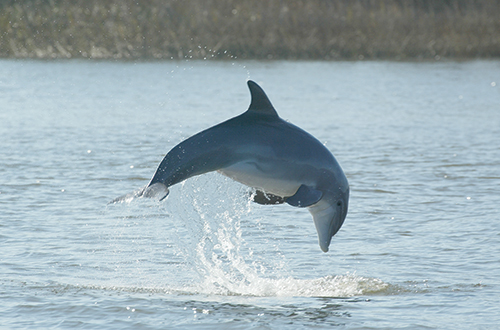
A bottlenose dolphin jumps out of the water in Charleston Harbor, S.C. Photo courtesy of NOAA/National Ocean Service.
As a kid, Portland State biology doctoral student James Powell wanted to work with dolphins.
He didn’t know how or what he would be doing with them, just that he needed to build his professional career around them. At one point, he considered becoming a dolphin trainer for the U.S. Navy, but was talked out of it and instead turned to the field of biology.
For six years, before coming to PSU, Powell did get to work with dolphins—they just weren’t always alive.
Now, Powell’s research on bottlenose dolphin bone density may end up revolutionizing how field biologists study the health of marine mammals everywhere.
“There’s no information known about bone density in bottlenose dolphins, so we’re establishing the background field of bone density as it naturally occurs with respect to age, or differences in sex and reproductive status—things that we know about the animals,” Powell said.
His goals are trifold: to create a baseline dataset that could relate bottlenose dolphin bone density to age; to determine the effects of pollution on bone density; and to create a portable, noninvasive ultrasound device that will allow field biologists to scan the flipper of a live, wild dolphin and estimate its bone density.
Powell studies the bones of stranded, deceased dolphins that have washed up on the beaches of Charleston, S.C., two sites in the northern Gulf of Mexico that were affected by the Deep Water Horizon oil spill, and one site in Sarasota, Fla.
In combination with hundreds of archived bones from previous strandings, he will create a dataset to determine if bone density correlates with age—an important indicator for all research studies involving animals.
According to Powell, bone density can roughly correlate with age in humans. For example both men and women will see an increase in bone density up to a point, but women will have a decrease after a certain age.
“And that same trend is seen in a lot of other mammals, but we don’t know what that is in dolphins,” Powell said.
Currently, the only way to determine a dolphin’s age is by cutting into a tooth and examining the annual growth layer groups—like counting rings on a tree, this technique isn’t always accurate and involves an invasive procedure. According to Powell, the process is time-consuming and costly to perform even on stranded dolphins—and there are only a few people who are trained to do the procedure.
Extracting a tooth from a live dolphin is difficult and requires a veterinarian—it is something that Powell feels researchers would prefer to avoid doing, particularly if they had another option.
If his data correlating bone density and age proves accurate enough, it could essentially replace the current method for aging animals in the wild. Even now, however, there is no easy way to look at the bone density of a live, wild dolphin without using invasive methods.
As another aspect of his research, Powell spends five weeks of the year studying live dolphins at his research sites. In Florida, he teams up with the Sarasota Dolphin
Research Program, which conducts annual health assessments on the world’s longest studied wild dolphin population. For more than 40 years, the SDRP has conducted research on health, communication, social behavior and ecology of a local population of bottlenose dolphins.
To conduct these health assessments, live dolphins are brought onto a boat where full medical workups are performed, and then the animals are released back into the wild. Bone density, which can be an indicator of environmental contamination, would be a useful measurement in these live medical assessments. In locations that have experienced mass pollutants such as those resulting from an oil spill, animal bone health could theoretically act as a gauge of the harm to the ecosystem as a whole.
According to Powell, the correlation between contamination and bone density in humans has been established. “We know that humans [who] live in areas with high contamination—exposed to things like heavy metals and certain contaminants—have lower bone density than they should, so we expect to see the same in dolphins,” Powell said.
So, while Powell’s research on dolphin bones is valuable for building a baseline of dolphin bone density from stranded dolphins of well-known populations, it doesn’t mean much for biologists looking at live dolphins.
Enter CyberLogic, a New York-based research, development and consulting company that recently developed a portable device for measuring the human radius bone using ultrasound—a far safer and cheaper method than X-ray.
While the prototype was originally designed for use in clinics as a convenient way to detect early signs of osteoporosis in humans, Powell read about the device and wondered if it could be modified to take images of the bones in a dolphin’s flipper.
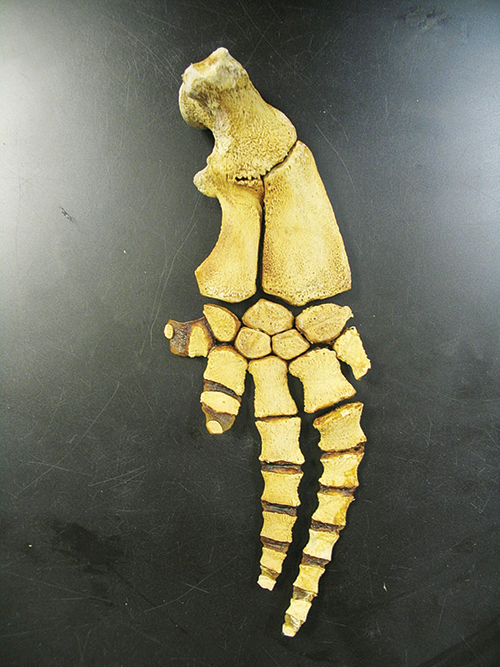
Flipper Bones of a bottlenose dolphin may be able to indicate age of animal. Photo courtesy of South Carolina Aquarium.
Dr. Jonathan Kaufman, president of CyberLogic, recalls receiving multiple emails from Powell asking whether his ultrasound technology could be used on a dolphin.
“I said ‘probably,’ but why would you want to?” Kaufman said. “And he wouldn’t go away!”
Powell’s persistence eventually paid off, as he and Kaufman have developed a prototype of the ultrasound technology that clamps around the flipper of a live dolphin and takes a reading. They have tested it on two of the Navy’s dolphins with positive results and no negative effects on the animals.
“I think what was the most amazing thing to me is that James is the only person who thought of such a crazy thing,” Kaufman said. “He came across our paper about a portable battery-powered device for people’s heels, and he somehow put two and two together and said that he could probably use and adapt this for dolphin bone.”
While his theory that bone density correlates to age and effects of contamination is speculative at this point, the device Powell is proposing would not only contribute a noninvasive method to examine bone density in live dolphins, but potentially help researchers estimate age as well.
This kind of technology could revolutionize the way field biologists examine dolphins—and potentially other marine mammals—in the wild.
“The bottom line is no one knows if it will be useful, but that’s the way it is with scientific studies,” Kaufman said. “I think it’s the way that science and engineering work best: when someone comes up with something no one’s ever thought of before. I think [Powell] is a really amazing guy, and he’s got a special talent that a lot of people don’t have.”
As a first-year doctoral student, Powell has a long road ahead of him. And while he admits to having a romantic notion of studying whales and dolphins when he was young, to actually get to work with other scientists working with live dolphins in the wild “has been a dream
come true.”

